Many marketers use customer segmentation to make their marketing efforts even more successful.
It is a great practice for delivering the most relevant content to people who are interested in their products and services. But if you don’t know how to do it, the effect might be the opposite of what you want.
See customer segmentation examples first to learn from the best. Tips and tricks included.
Psst! We’ve provided a must-have tool.
But for now, let’s cover the basics.
What is customer segmentation?
In simple terms, customer segmentation is when companies group similar customers together based on things they have in common.
Businesses can figure out what different groups of customers might want or like. Instead of just treating everyone the same, companies talk to each group in a way that makes sense to them.
Businesswise, it is a great, win-win move because companies use the fullest potential of marketing efforts, and customers get only relevant information.
Customer segments: why do they matter for companies?
But it’s not the end of customer segmentation benefits. Check out the other ones.
#1 Boosted personalization
As companies know more about each group of customers, they can create messages and offers that are just right for them. Customers get something that matches their liking.
💪🏻 More and more companies focus more on personalization because of its power.
#2 Higher ROI
Speaking of personal touch – with segmentation analysis, customers are more likely to buy things because you offer a product or service they might have been looking for. And this brings us to the next benefit – increased ROI.
When you know which group of customers is most likely to buy, focus your efforts there. A targeted approach like this means the company spends less money on people who might not be into your offerings. Instead, you put your energy into customers likely to say “yes.”
#3 Customer satisfaction
Customers are happier and more satisfied after they receive what they want. And they tend to return for more because of their positive experiences! On top of that, they might want to spread the word to their friends.
#4 Better engagement
If you segment your customers into certain groups, getting their attention will be easier. Simply because you know what they’ve keen on. Once sending a newsletter to hike lovers about the newest, innovative gear at your shop, probably they’ll read, click, and explore. In other words, they’ll engage with the content you provide.
And increased engagement means more data. And more data means a deeper understanding of your audience so that you can deliver tailored, relevant and entertaining content.
#5 Accurate, paid campaigns
Accurate, paid campaigns are those that are targeted to people who are looking for the product you advertise. So you don’t waste money showing ads to the wrong people.
Whenever you create accurate ads, the chances of getting clicks and conversions go up. It boosts the company’s profits and makes its marketing campaigns that work.
#6 Product development
Stats will show you that some of the products are not satisfying for a specific group of buyers – low conversions, increased revenue, or poor click-through rate. And when you notice decreases in stats, react as fast as possible. Ask the users for feedback – why they don’t like the product, what they would change. Try to adjust your services to their suggestions.
Feedback is an excellent way to keep your products and services developing and changing for the better. If you haven’t done it yet, consider incorporating feedback forms or other methods of getting opinions. Make it a core element of your strategy.
#7 Customer loyalty and retention
Almost everyone has that go-to shop or product – you know what quality to expect, you’re familiar with the prices, and you even know in what aisle the product typically is located. And you don’t feel like changing it because it’s just a convenient choice for you.
If you know what we’re talking about, it means that you’re one of those loyal customers. And customer segmentation may bring you a similar outcome. If you know what group likes what products or services, you’ll be able to provide the best version of it.
Most probably, the customer will stick to your product because it’s perfectly tailored to their needs. So, you’ll have a higher customer retention rate.
#8 Effective communication
Would you reach out to your Gen Z audience via email? Probably not. Market segmentation and research about customer segments will help you figure out what marketing messages to use to connect with your customer base.
Relevant communication builds the company’s identity and credibility. Targeted messages sent via the right channels grab prospects’ and new customers’ attention way better.
Also, personalized communication makes people take actions. For example, if you run a special promotion, display the ad only to the target group, and see conversion and sales growing.
#9 Long-term growth
After getting to know certain customers group, you’ll be able to develop strategies that build lasting customer relationships.
Let’s take a look at the example.
A technology company realizes that it has two main customer groups: tech enthusiasts and business professionals.
For tech enthusiasts, it’s better to focus on releasing innovative products with advanced features and promoting them through channels like tech blogs and social media platforms.
For business professionals, the company highlights the practical benefits of its products in improving efficiency and productivity. The company can emphasize integration capabilities with common business pieces of software and offer personalized training for their products’ professional use.
So by segmenting, you’ll learn about online habits and likings. And based on that valuable info, you can personalize communication, marketing, and product development strategies.
As you can see, customer segmentation is a powerful practice. But it’s also important to know what to do – what tools to use for customer segmentation analysis.
Otherwise, all your effort goes to waste. 🗑️
But first, let’s get to know some customer segmentation examples.
Customer segmentation models
You can segment your audience in terms of age, where they come from, how they behave, and more. Let’s discuss what stays behind each of the segmentation models.
01 Demographic segmentation
This type of customer segment involves categorizing in terms of attributes like age, gender, income, education, family status, and income through wealth screening services.
As you identify the characteristics of different subsegments, it’s your time to customize interactions.
➡️ Customer segmentation example:
A company that sells skincare products may use demographic data to create distinct marketing campaigns – one focused on anti-aging solutions for an older demographic and another highlighting acne treatments for a younger audience.
02 Geographic segmentation
Categorizing customers based on their geographic location is called geographic customer segmentation. It helps companies optimize their distribution and logistics.
Knowing where your customers are located, you can strategically position your stores or distribution centers. Or send them a notification with tempting sales when they’re near your shop.
➡️ Customer segmentation example:
An online clothing retailer might stock winter clothing more heavily in regions with colder climates and prioritize summer wear in warmer areas. It reduces inventory waste and makes inventory more effective according to local demand.
03 Psychographic segmentation
This method of segmenting customers is based on grouping them according to lifestyles, values, beliefs, and attitudes. It goes beyond demographic factors because it’s about getting to know frequent shoppers’ emotional triggers.
If an online store, for instance, knows its customers prioritize eco-friendliness, it can create sustainable options that appeal to this value.
➡️ Customer segmentation example:
Let’s consider a company that sells personal care products, such as shampoos and body washes. Thanks to psychographic segmentation, they’ve identified a segment of environmentally-conscious customers who highly value sustainability. So the company may want to change their packaging to recycled ones or the product formulas like shampoo in bars instead of liquids.
04 Technographic segmentation
When customers are divided according to their technology preferences, usage, and tech behaviors, then it’s a technological segmentation example. The method provides information about the technologies customers adopt and how they engage with them.
Knowing your customers’ devices, you’ll find out the best communication channels for connecting with them, and also how to optimize your marketing strategies to the target customers’ preferences.
➡️ Customer segmentation example:
A software company provides project management tools. Using technographic segmentation, they’ve defined two segments: one that heavily adopts cloud-based solutions and another that prefers on-premises systems.
For the cloud-based segment, the software company would develop a web-based application that easily integrates with popular cloud storage services like Google Drive or Dropbox. They might also offer real-time collaboration features to support remote teams who rely on cloud-based SmallBiz tools.
The company would create a downloadable software version that customers from the on-premises segment can install and run locally on their servers. Such a version would provide data security and more control, as this segment prefers.
05 Behavioral segmentation
Although very similar to a psychographic one, behavioral customer segmentation is a distinct type of market segmentation. It is determined by customers’ actions, such as:
- their purchasing patterns,
- usage of products,
- engagement with marketing campaigns,
- interactions with a company,
just to name the most vital ones.
So what’s the main difference? Behavioral segmentation is more centered around observable actions, while psychographic segmentation focuses on understanding the underlying psychological motivations that drive customer behavior.
➡️ Customer segmentation example:
A streaming service might recognize a segment of users who frequently watch documentaries and use this insight to provide a selection of documentaries tailored to their preferences.
06 Needs-based segmentation
As the name suggests, this customer segmentation involves categorizing customers based on their needs, requirements, and problems that a company’s products or services can fix.
➡️ Customer segmentation example:
An insurance company recognized a customer segment of young professionals seeking affordable but comprehensive coverage. If they offer customizable insurance plans tailored to their specific life stage and financial constraints, the company will meet their individual needs very well.
07 Value-based customer segmentation
This market segmentation is about grouping customers by the value they bring to a company, which means factors like spending habits, loyalty, and overall contribution.
➡️ Customer segmentation example:
A clothing store that wants to implement value-based customer segmentation efforts. They have a loyalty program where loyal customers earn points for every purchase they make. With value-based segmentation, they can offer exclusive benefits to different groups of customers based on their spending habits and loyalty.
They might have a “Gold Tier” for customers who consistently make large purchases or have been part of the loyalty program for a long time. Customers in this tier could receive perks like early access to sales, special discounts on premium items, and personalized styling sessions.
Learn from the best – successful customer segmentation examples
Check out these real-life customer segmentation examples.
#1 BeLenka – back-to-school sales
Belenka is a footwear company that offers a barefoot shoe line. According to their demographic customer segmentation, they provide a great -40% off due to back-to-school time.
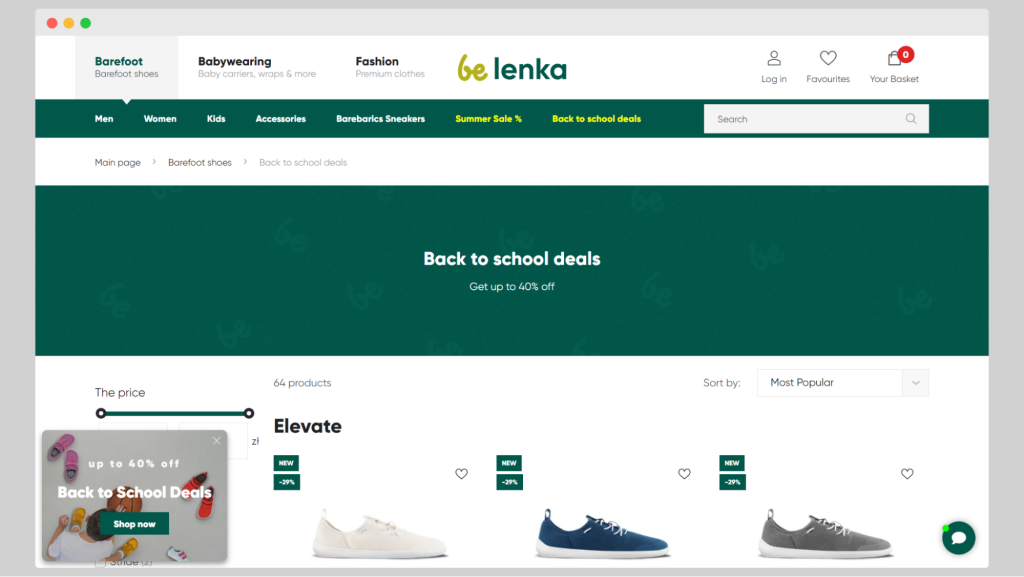
Check out the apparel and footwear share by segment.
#2 Zara – Barbie collection
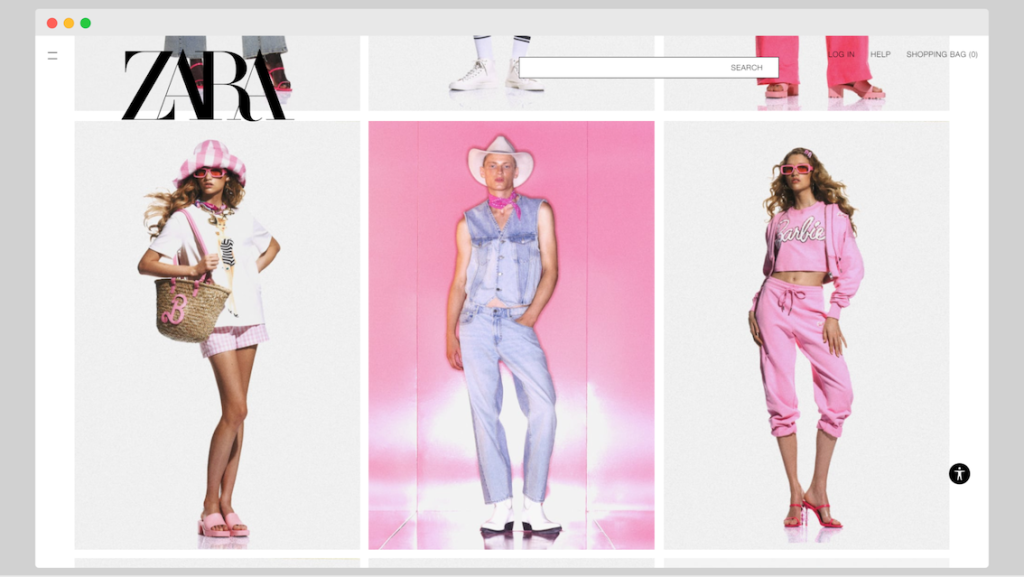
Zara is a clothing company that came with a collection inspired by the newly-released film “Barbie.” It is an example of interest-based customer segmentation.
#3 Mcdonald’s – product placement in blockbusters
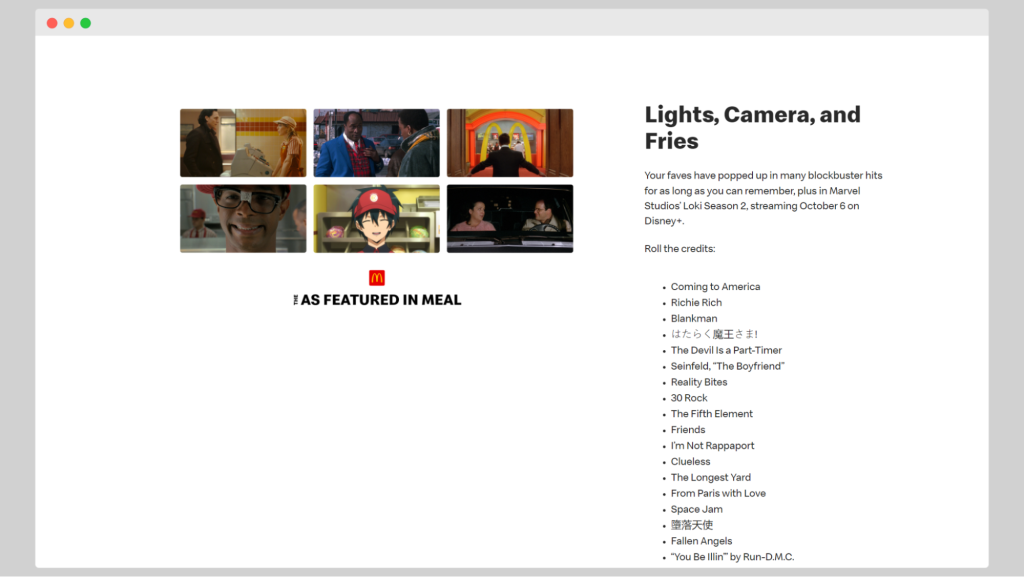
Mcdonald’s is a worldwide-known restaurant chain. They’ve targeted their campaigns to the people who like The Office, Coming to America, or Clueless, as they place their products there. To get connected to their target audience, they adopted interest-based customer segmentation.
#4 Nike – gender-specific offers
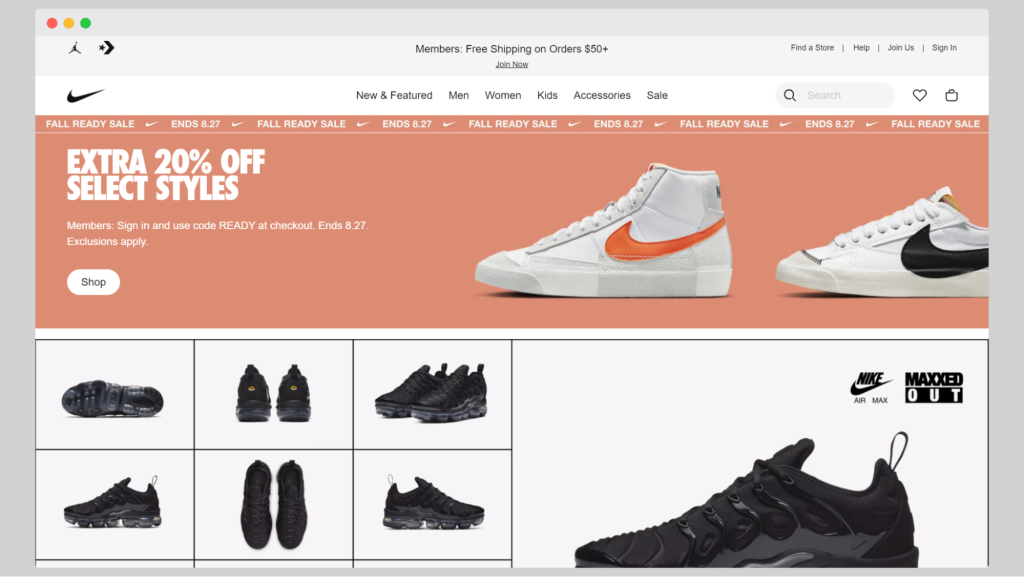
Like most clothing companies, Nike divides their offering between genders – men and women. They display such subpages on the top of their website, making them easily accessible.
#5 St. Patrick’s Festival – a geographical analysis
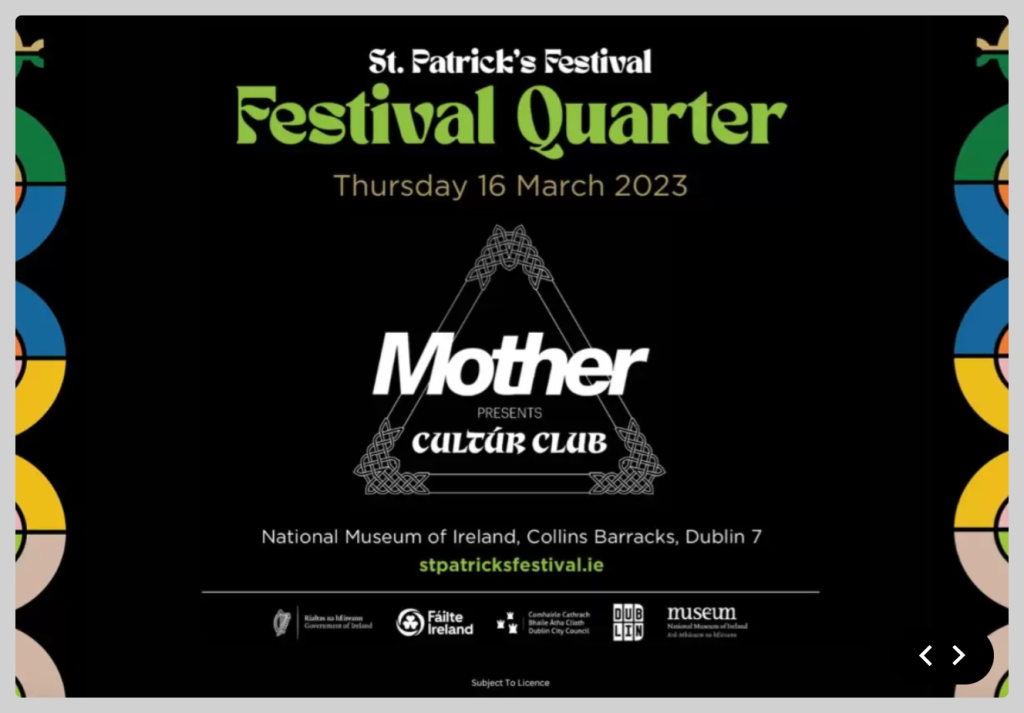
Do you see similar ads when arriving at a new location? That’s geographic segmentation. St. Patrick’s Festival tries to attract people in Dublin to make them attend the festival’s events there.
Improve your customer segmentation strategy: use a tool for segmenting customers
If you want to improve your customer segmentation strategy, a reliable tool is a must. Trying to find one? Look no further than Xtremepush.
Xtremepush lets companies segment customers using in-app analytics and CRM integrations.
With these capabilities, you can get a customer segmentation analysis and deliver contextual and relevant user engagement. The platform offers deep analytics to understand user behavior, both online and offline, including in-app behavior and geo-location data.
🎯 Create customer segments based on various criteria, such as gender, age, location, preferences, app version, and language, using laser-like targeting.
🎯 Send accurate marketing messages to users based on their previous interactions and preferences.
🎯 Implement Xtremepush. It’s the cherry on top of your successful customer segmentation strategy.
Customer segmentation examples explained
Now you know everything on how to segment customers and what tool to use to make it accurate and efficient.
Do you want to check in practice how to group your audience? Contact the Xtremepush team, get a tool demo, and see how easy it is to segment customers.
Customer segmentation: FAQ
What is an example of customer segmentation?
An example of customer segmentation is a smartphone company adjusting its marketing strategies for different age groups – demographic segmentation.
They might create youthful ads for teenagers focusing on trendy features while targeting professionals with productivity aspects. It means that each group receives messages that resonate with their interests, increasing the likelihood of engagement and sales. The company might also develop specific phone models with features suited to various age-related preferences, effectively meeting the diverse needs of its customer segments.
What are the 4 types of segmentation?
- Demographic segmentation categorizes customers by attributes like age and income.
- Geographic segmentation divides them by location.
- Psychographic customer segmentation considers lifestyle and values.
- Behavioral segmentation groups based on buying patterns and interactions with the company.
Segmenting customers like this make businesses understand their customers better, leading to more targeted strategies and product recommendations that resonate with the customer base. Customer loyalty goes up as well.
Why is customer segmentation important?
It helps businesses understand diverse customer groups. That’s the main reason why customer segmentation is important. And this understanding allows marketers to develop strategies that match up with specific consumer wants and wishes.
A focused approach like this optimizes marketing efficiency and increases ROI. And what’s great about customer segmentation is that it helps to reveal upcoming trends and opportunities within particular segments.
How to track the effectiveness of segmented marketing campaigns?
Use KPIs. Analyze metrics like conversion rates, click-through rates, and sales data specific to different target audience groups. Compare these metrics against baseline measures and across different customer segments to identify which strategies yield the best outcomes. You can use embedded analytics tools to monitor customer engagement, website traffic, and social media interactions.
Make tracking the campaign’s performance a habit.
Can small businesses benefit from customer segmentation?
Of course, small businesses can benefit from customer segmentation. When they understand customer groups, they can tailor products, marketing, and services to match specific needs. This precision saves resources, enhances engagement, and boosts loyalty.














